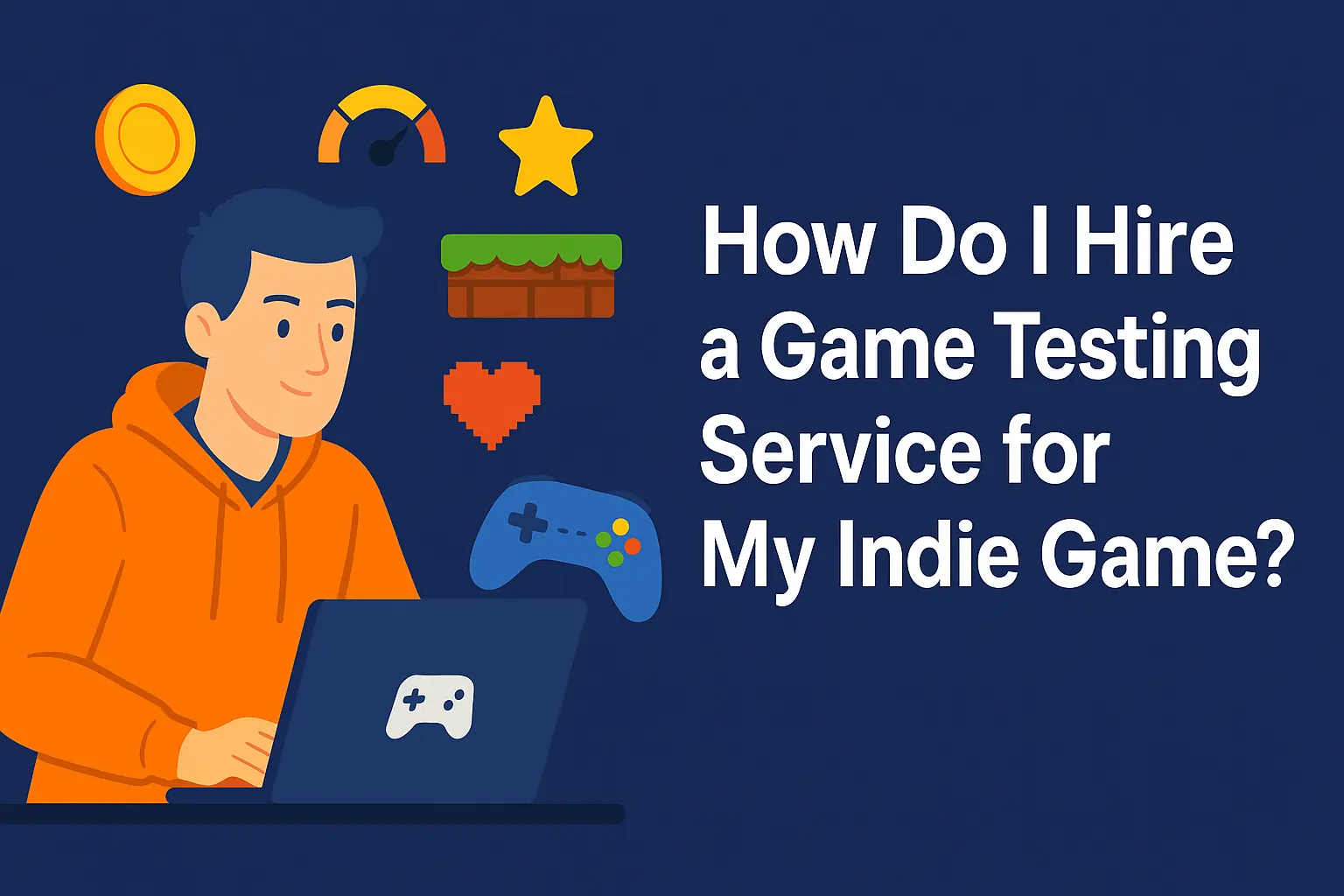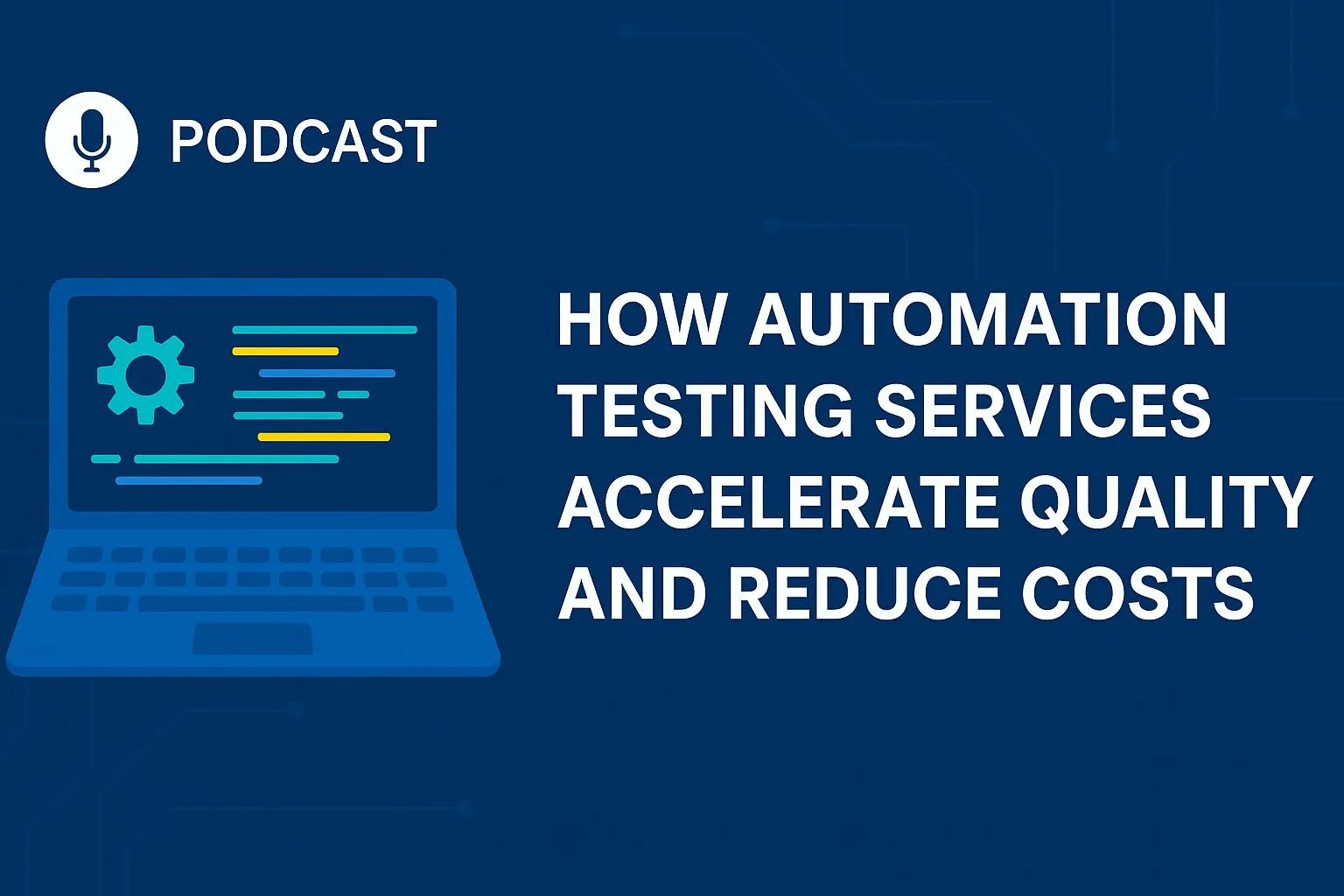Top Benefits of Automating Game Testing Services
In the dynamic realm of game development, game testing services have emerged as a crucial component for ensuring quality and performance. As players demand immersive experiences free from bugs and glitches, developers face the challenge of delivering high-quality games on tight deadlines. Enter game testing automation—a game changer that streamlines the testing process, enhances efficiency, and ultimately leads to better gaming experiences.
What Is Game Testing Automation?
With the rise of automation tools, developers can swiftly identify issues, conduct comprehensive tests, and release polished products. This blog post will explore what game testing automation is, the differences between manual and automated testing, the benefits it brings, and the tools available to enhance your testing strategy. So, grab your controller, and let’s dive into the exciting world of automated game testing!
In this blog post, we’ll explore what game testing automation is, how it differs from manual testing, the benefits it brings, the tools available, and how game testing companies like Testers HUB are leading the charge in automated game testing services. So, grab your favorite gaming snack, sit back, and let’s dive in!

Manual vs. Automated Game Testing: Key Differences
To fully appreciate the benefits of automation in game testing, it’s important to understand the differences between manual and automated testing methods.
Manual game testing relies on human testers who engage with the game directly. They navigate through its various features, identifying bugs, glitches, and gameplay issues based on their personal experiences. This hands-on testing approach is particularly effective for uncovering user experience problems and design flaws that require human intuition. However, manual testing can be quite labor-intensive and time-consuming, especially for tasks that involve repetitive actions, like playing the same level multiple times or testing across different devices.
On the other hand, automated game testing utilizes specialized software to mimic player actions within the game environment. These automated tools excel at performing repetitive tasks efficiently, executing the same tests numerous times without fatigue or error. While automated testing may fall short in assessing subjective aspects, such as the overall feel and enjoyment of the game, it shines in quickly detecting bugs and performance issues. This efficiency makes it a valuable asset in the game development process.
Read: For more details on the Best Game Testing Companies of 2024, check out our latest blog!
Key Differences Summary
- Efficiency: Automated testing significantly increases the speed at which numerous tests can be executed, whereas manual testing tends to be slower and is more susceptible to human mistakes.
- Flexibility: Manual testers have the ability to adapt and respond to unforeseen issues that may arise during gameplay. In contrast, automated tests operate based on fixed scripts, which limits their ability to adjust on the fly.
- Cost: Although there is an initial investment required for automation tools, the long-term savings in time and labor costs can be substantial, making automation a worthwhile investment.
- Depth of Testing: Manual testing is particularly effective for evaluating subjective elements, such as overall gameplay experience and aesthetics. Meanwhile, automated testing is better suited for tasks that are repetitive or demand extensive performance checks.
By understanding these distinctions, developers can make informed choices about which testing approach best suits their project needs, ultimately enhancing the overall gaming experience for players.
Top Automation Tools to Consider For Game Testing services
Selecting the right tools for automated game testing is critical to streamlining the process. Various tools are tailored to different aspects of testing, providing unique advantages. Appium, for instance, is a go-to for mobile game testing across iOS and Android, offering flexibility with multiple programming languages. Selenium, widely used for web-based games, simulates player interactions across devices to ensure compatibility. For broader applications, Test Complete supports desktop, mobile, and web, while Ranorex stands out with its robust capabilities for creating and managing tests on similar platforms.
Unreal Engine’s Automation Framework integrates directly into the development process, optimizing performance testing, while Cucumber, based on Behavior-Driven Development (BDD), facilitates team collaboration by presenting test cases in an accessible language. Jenkins, known for automating tasks related to building and deploying games, works seamlessly with other testing tools to improve workflows. Postman, while primarily focused on API testing, is invaluable for online games reliant on backend services, ensuring smooth API performance.
By leveraging these tools, developers can expedite the testing process, catch bugs early, and deliver polished games to the market more efficiently.
AI’s Influence on Multiplayer Testing
AI plays a pivotal role in the testing of multiplayer games, especially when it comes to simulating the intricate interactions that occur among many players. By automating these complex player interactions, AI helps testers identify critical issues related to server performance, lag, and synchronization—challenges that can be hard to reproduce through manual testing methods.
For instance, envision the task of testing a large-scale online battle royale game that supports thousands of players in a single match. AI can generate a variety of player behaviors, such as running, shooting, and engaging with the game world. This functionality allows developers to pinpoint potential bugs and performance bottlenecks that would be extremely difficult to mimic manually. With AI-driven automation, these sophisticated testing scenarios can be conducted smoothly and efficiently, significantly enhancing the overall gaming experience for users.
The Role of Scripts in Automated Game Testing services
Scripting lies at the core of automated testing. These scripts serve as written instructions that guide the testing software on what actions to perform. Whether it involves navigating a character through various game levels, engaging with non-player characters (NPCs), or simulating different network conditions, scripts enable developers to execute thorough tests without the need for manual gameplay in each scenario.
Key Advantages of Utilizing Scripts
- Reusability:
One of the major advantages of scripts is their reusability. Once a script is developed, it can be applied to multiple tests and even across different games. This efficiency helps save significant time and resources, allowing teams to dedicate their efforts to tackling more complex challenges. - Consistency:
Automated scripts provide a level of consistency that manual testing cannot match. Tests executed via scripts run in the same manner every time, which is crucial for identifying bugs that may only surface under certain conditions. - Scalability:
As games evolve and increase in complexity, so too must the tests that ensure their quality. Scripts can be scaled up to accommodate more intricate scenarios, allowing them to adapt to future changes and enhancements in the game. - In-Depth Reporting:
After execution, automated tests can generate comprehensive reports detailing their findings. These reports assist developers in pinpointing where issues arose and provide insights into how to address them effectively.
Crafting Effective Test Scripts
Developing effective test scripts necessitates thoughtful planning and attention to detail. Here are some key practices to consider:
- Modular Structure:
Design your scripts with a modular approach by dividing them into smaller, reusable components. This strategy simplifies the process of updating individual sections without needing to overhaul the entire script. - Descriptive Naming:
Utilize clear and meaningful names for your scripts and their functions. This practice helps team members easily comprehend the purpose of each code segment, fostering better collaboration and understanding within the team. - Error Management:
Incorporate error-handling techniques within your scripts. This precaution ensures that a single issue doesn’t derail the entire testing process, maintaining the integrity of your automated tests. - Consistent Updates:
As the game evolves, make it a point to keep your scripts up to date. Regular maintenance guarantees that your tests stay relevant and continue to deliver effective results.
By following these best practices, development teams can build strong and dependable test scripts that greatly enhance their automated game testing initiatives.
Discover the Best Video Game Testing Services for Mobile and Console. Visit our website for more details!
Performance Testing: Automating the Stress Test
Performance issues, like lag or frame drops, can break a player’s immersion and damage their overall experience. This is where automated stress testing comes into play. Automated tools can simulate high volumes of players or extreme game conditions to see how a game performs under pressure.
The Importance of Stress Testing
Stress testing is vital for identifying potential bottlenecks in a game’s performance. Here are some key areas that stress testing can help developers evaluate:
- Server Load: By simulating thousands of players interacting with the game at once, developers can assess how well their servers handle the load. This is crucial for online multiplayer games.
- Response Times: Automated stress tests can measure how quickly the game responds to player actions. This information is critical for ensuring a smooth gameplay experience.
- Resource Utilization: Stress testing helps developers identify how efficiently a game uses system resources, such as CPU and memory. This can help in optimizing performance.
- Breakpoints: Developers can identify the breaking point of their game, allowing them to set appropriate limits and improve overall stability.
Steps for Effective Automated Stress Testing
To conduct successful automated stress testing, follow these essential steps:
- Establish Clear Goals:
Begin by defining the objectives of your stress tests. Are you aiming to assess server capacity, evaluate response times, or monitor resource usage? Having clear goals will guide your testing process. - Replicate Real-World Scenarios:
Design your tests to closely reflect actual player behavior. This includes incorporating a variety of play styles, different network conditions, and even simulating players from diverse geographical locations. The more realistic your simulations, the better you can gauge how your game performs under pressure. - Evaluate Outcomes:
Once the stress tests are completed, take the time to thoroughly analyze the results. Look for trends or issues that require attention and make the necessary modifications to improve performance. - Adopt Continuous Testing Practices:
Integrate stress testing into your ongoing development cycle. As your game evolves, your testing methodologies should also adapt to ensure continued effectiveness.
By embracing automated stress testing, developers can confirm that their games maintain strong performance, even during high-pressure situations, ultimately delivering a smooth and enjoyable experience for players.
Automated Testing for Multiplayer Environments
Testing multiplayer games brings its own unique set of challenges, which is why automated game testing services are so crucial. Multiplayer environments require testing not just individual player experiences but also how those players interact with each other.
Key Considerations for Multiplayer Testing
- Latency Simulation: Automated tools can simulate various network conditions, including high latency and packet loss. This helps developers understand how their game performs under less-than-ideal conditions.
- Player Interaction: Testing how players interact with one another is essential for multiplayer games. Automated tests can simulate various player behaviors, allowing developers to spot issues with matchmaking, interactions, and game mechanics.
- Server Capacity: Automated testing can assess how many players a server can handle before performance starts to degrade. This is critical for ensuring that games can accommodate their player bases.
- Matchmaking: Testing the matchmaking system is crucial for multiplayer games. Automated tests can simulate thousands of players trying to connect, helping developers identify and fix any issues.
Implementing Automated Multiplayer Testing
To maximize the effectiveness of automated multiplayer testing, consider these best practices:
- Create Realistic Scenarios: Design your tests to reflect real player behaviors and interactions. The more realistic your tests, the more reliable the results.
- Utilize Cloud Services: Consider using cloud-based services for your multiplayer tests. These services can help simulate large player bases and varied network conditions without the need for extensive local resources.
- Monitor Performance Metrics: Collect performance data during automated tests to identify potential bottlenecks or issues. Analyzing this data can guide your optimization efforts.
- Conduct Regular Tests: Regularly scheduled automated multiplayer tests can help catch issues early, ensuring that your game remains stable and enjoyable as it evolves.
By leveraging automation for multiplayer testing, developers can ensure that their games offer smooth, enjoyable experiences even when many players are online simultaneously.
Optimizing Automation in QA Workflows: Best Practices For Game Testing Services
To get the most out of automated game testing, it’s essential to smoothly blend it into your quality assurance (QA) processes. Begin by focusing on repetitive, time-heavy tasks—these are ideal for automation and will provide the quickest return on effort. That said, don’t completely ditch manual testing. A hybrid approach is key, as manual testing is still crucial for assessing subjective elements like player experience and usability.
Automating tests should be part of your continuous integration practices, allowing for frequent test runs and timely developer feedback. It’s equally important to revise and update your automated test scripts as the game develops to ensure relevance and accuracy. Team collaboration is another major aspect—bring together input from developers, testers, and designers. Each role can offer valuable insights that strengthen your testing framework. Good documentation is also vital, as it helps ensure team members can easily follow, modify, or build upon existing tests.
Lastly, keep an eye on your automated tests and regularly refine them. Continual monitoring and optimization ensure that the testing process stays efficient and effective. By applying these strategies, teams can build a robust QA system that leverages automation effectively while maintaining the necessary insights that only manual testing can provide.
The Future of Game Testing Services In Automation Technology
The landscape of game testing services is evolving rapidly, driven by technological advancements. game testing Companies like Testers HUB are at the forefront, offering state-of-the-art automation tools that simplify the testing process.
A key trend is the emergence of AI-driven testing, which allows for sophisticated analysis of gameplay data. These tools can simulate player actions and anticipate potential bugs, enhancing the gaming experience.
Cloud technology is also becoming integral, enabling teams to conduct large-scale tests without heavy reliance on local resources, thereby increasing efficiency. Additionally, integrating automated testing into real-time development allows developers to get instant feedback, speeding up the entire process.
As virtual reality gaming gains traction, testing solutions must adapt to meet the unique challenges of immersive environments. Furthermore, collaboration among different teams will improve the testing process, resulting in higher-quality games.
Looking ahead, we may see fully automated testing workflows, where AI takes on the majority of quality assurance tasks, swiftly identifying and resolving issues. Until that becomes a reality, a hybrid approach that combines automation with human insight will ensure games are thoroughly vetted and ready for players.
Conclusion
In the world of game development, game testing automation is a vital tool for ensuring high-quality, bug-free releases. By automating repetitive and performance-intensive tests, developers can save time, improve accuracy, and deliver better games faster. Companies like Testers HUB are at the forefront of this innovation, helping developers integrate cutting-edge automation solutions into their QA processes.
As AI and automated testing continue to evolve, the future of game development promises even more efficiency and smarter testing strategies—ensuring that games are ready for players from day one, without the frustration of unexpected bugs or performance issues. The gaming landscape is continually evolving, and automation is set to play a crucial role in shaping its future.
So, whether you’re a seasoned game developer or just getting started, embracing game testing automation can be your key to creating high-quality, engaging gaming experiences that captivate players worldwide. Happy testing!
FAQ
1. What do game testing services entail?
Game testing services assess a video game’s performance and user experience by identifying bugs and ensuring quality before release.
2. What distinguishes automated game testing from manual testing?
Automated testing uses software to simulate player actions for bug detection, while manual testing involves human testers playing the game for subjective evaluation.
3. What advantages does automated game testing offer?
Automated game testing is faster, more accurate, reduces labor costs, and efficiently handles repetitive tasks across multiple platforms.
4. How can Testers HUB improve my game’s quality?
Testers HUB identifies bugs and optimizes performance through both manual and automated testing methods.
5. What types of games does Testers HUB test?
Testers HUB tests mobile, console, and PC games across various genres.










